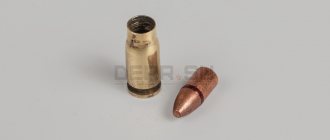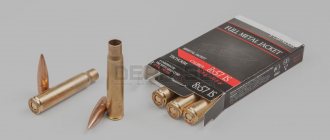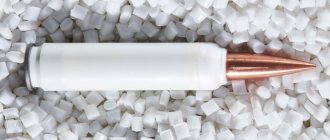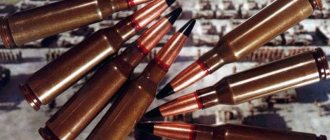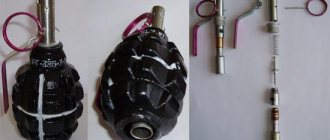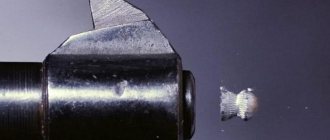They say that what flies up must one day come down. Bird or plane. Soccer ball. Bitcoin price. But not all landings are created equal. What happens if you shoot a gun in the air? The bullet will travel about a kilometer (depending on the angle and force of the shot). Having reached apogee - the highest point in flight - the bullet will begin to fall. Air resistance will slow it down slightly, but bullets are by nature designed to fly through air easily (aerodynamic). Therefore, if such a bullet hits someone after turning around, there is a high probability of murder.
In rural or desert areas, the likelihood of killing someone is extremely low because there are few people. But in crowded cities, the likelihood of hitting someone increases dramatically, and people are quite often killed by stray bullets. This is especially true for countries where the carrying and use of weapons is practically unrestricted. For example, in the USA.
Where does a bullet fired upward fall? Could she fall back into the barrel?
The answer to the question is obvious: the bullet falls down. But not at the same point from where you shot. Any sniper will confirm this - from a more or less decent distance it is almost impossible to put two bullets in one hole. Firstly, it is simply impossible to secure the machine gun so that the bullet flies vertically upward. Secondly, let's assume we were able to hang the barrel so that it points perfectly upward. But all the same, some flows will act on the bullet. Above 60 m there are always geothermal flows, which is why wind generators are usually installed high. This means that a lateral force will act on the bullet, and there will be some kind of lateral displacement. If the bullet is in the air for more than 10 seconds, then the action of the Coriolis force, that is, the rotation of the Earth, must also be taken into account. Therefore, no matter how perfectly you hang the weapon, the bullet will not fall back into the barrel.
A few words about the Coriolis force. 170 years ago, Foucault clearly proved that the Earth rotates with the help of a pendulum. Imagine a pendulum on a 70-meter suspension, the thread is carefully burned, and it begins smooth movements. A circle is drawn from the center of a freely suspended pendulum, and along this circle, the amplitude of the pendulum's swing, figures are arranged, like in dominoes. The pendulum, swinging, knocks down the figures and the next time it hits not the place where the figure was knocked down, but next to it - and knocks down the next one. This happens precisely because the Earth rotates around its axis. For a bullet, this point also needs to be taken into account.
The energy of a bullet falling down is calculated using the formula for the potential energy of a body raised above the ground: Ep = mgh. We must remember that energy is not lost, it passes from one form to another. A bullet raised to a height (h) has the corresponding potential energy.
Current
- New episodes of the "Scientific Sensations" program - in the "My Planet" application
- The launch of 5G sparked an aviation crisis in the US
- New episodes of the “Big Leap Forward” program - in the “My Planet” application
Where will she return after the shot? It depends on the altitude to which it flew. And the height to which an object will fly depends on the energy that was imparted to it. Accordingly, the stronger the explosion, the higher the bullet will fly and the longer it will fall. The longer it falls, the greater the final speed it will gain.
For calculations, you need to have input data, such as the initial speed of the bullet at the exit of the barrel, the energy of the shot, in order to understand how high the bullet will fly up. While it flies upward, two mutually balancing forces act on it: the energy of the shot pushes up, gravity pulls down. As the kinetic energy of the shot bullet (the energy that was imparted to this bullet when the powder charge exploded) is consumed, the bullet slows down. At a certain distance from the point of the shot, the kinetic energy of the bullet completely transforms into potential energy. Gravity compensates for the energy of the shot. For a split second the bullet hangs and then begins to fall down. Like all other objects on our planet, it falls down with an acceleration of 9.8 m/s. And then, depending on how high it took off, we calculate what speed it will develop by the time it lands. It may well be that this speed will be even higher than the initial speed of the shot, because every second the speed increases by 9.8 m/s.
linur2
To determine the adequacy of the lethal effect, there is the following empirical relationship: the bullet energy in Joules must be at least 8-10 times the target’s body weight in kilograms, that is, to kill an animal weighing 50 kg, it is desirable that the bullet have energy at the moment of impact not I think it's 400 Joules. To determine the stopping effect, such simple dependencies do not exist, however, with equal kinetic energy at the moment of impact, which quantitatively satisfies the above requirement for lethality, bullets of a larger caliber will have the greatest stopping effect, or bullets that increase their diameter upon impact (expansive), or high-speed ones ( at a speed of about 1000 or more meters per second) small-caliber bullets that cause the main damage with a supersonic shock wave arising in the target’s body.
Small caliber cartridges.
.22LR (5.6mm rimfire)
Cartridge performance characteristics:
nominal caliber: 5.6 mm bullet diameter: 5.66 mm bullet weight: 2.72 g gunpowder weight: 0.34 g V0: 346 m/s E0: 132 J
Performance characteristics of the cartridge (military 7N10, with a bullet of increased penetration):
nominal caliber: 5.56 mm bullet diameter: 5.62 mm bullet weight: 3.61 g V0: 870-890 m/s E0: 1360-1430 J
Cartridge performance characteristics (hunting):
nominal caliber: 5.6 mm bullet diameter: 5.6 mm bullet weight: 2.8 or 3.5 g V0: 1200 or 1000 m/s E0: 2016 or 1750 J
Medium caliber cartridges (6-9mm)
.243 Winchester (6x51mm)
7mm Remington magnum (7x63mm)
Cartridge performance characteristics:
nominal caliber: 7 mm bullet diameter: 7.21 mm bullet weight: 9.5 g V0: 960 m/s E0: 4195 J
.300 Winchester magnum (7.62x67mm)
Cartridge performance characteristics:
nominal caliber: 7.62 mm bullet diameter: 7.82 mm bullet weight: 7.48-14.96 g gunpowder weight: 3.5-5.18 g V0: 1107-777 m/s E0: 4760-4490 J
Cartridge performance characteristics:
nominal caliber: 7.5mm bullet diameter: 7.81mm bullet weight: 11.3 g powder weight: 3.2 g V0: 750-840 m/s E0: 3178-3987 J
Performance characteristics of the cartridge (combat 57-H-231C, with a steel core):
nominal caliber: 7.62mm bullet diameter: 7.9mm bullet weight: 7.9 g powder weight: 3.0 g V0: 710-725 m/s E0: 1990-2080 J
Performance characteristics of the cartridge (hunting, 7.62x39-8PO, with a semi-jacketed bullet):
nominal caliber: 7.62mm bullet diameter: 7.9mm bullet weight: 8.1 g V0: 745 m/s E0: 2250 J
Cartridge performance characteristics (military, M59, 7.62mm NATO):
nominal caliber: 7.62 mm bullet diameter: 7.85 mm bullet weight: 10.2 g powder weight: 3.1 g V0: 840 m/s E0: 3600 J
Cartridge performance characteristics:
nominal caliber: 7.62mm bullet diameter: 7.9mm bullet weight: 9.6-13 g gunpowder weight: 3.1g V0: 780-870 m/s E0: 2920-4466 J
Cartridge performance characteristics (hunting):
nominal caliber: 7.62mm bullet diameter: 7.85mm bullet weight: 7.8-14.96 g gunpowder weight: 2.1-3.4g V0: 976-701 m/s E0: 3715-3650 J
Cartridge performance characteristics:
nominal caliber: 7.92mm bullet diameter: 8.22mm bullet weight: 12.8 g powder weight: 3.05 g V0: 750-880 m/s E0: 3600-4956 J
.338 Lapua magnum (8.6×70mm)
Can a bullet fired upward kill a person?
It definitely can. I can guess where a discussion on this topic might come from. There is a myth that if you throw a coin from the Eiffel Tower, it will develop such speed that it can easily kill a person by hitting him in the head. But this is actually nothing more than a myth, because the coin has planning: due to the air flow, it will not fall vertically; roughly speaking, it will dangle. In this case, we cannot talk about the acceleration of free fall. As for the bullet, since it has an almost ideal ballistic shape, the flows will not act on it to such an extent; it will fall down without gliding.
Let's calculate the speed for a bullet weighing 9 g:
A bullet falls from a height of 2 km. Fall time - 20 s.
20 s x 9.8 m/s2 = 196 m/s = 705.6 km/h.
This is the final speed. Without taking into account air resistance.
The speed of a bullet from a pistol is approximately 300–500 m/s. Obviously, 200 m/s is quite enough to be fatal (it all depends on the location of the hit).
Let's calculate the energy:
Kinetic energy is mass times the square of velocity divided by 2.
Formula: E = m x v2 / 2
0.009 x 196 squared / 2 = 172.8 J.
According to forensic medicine, when fired, a projectile with specific kinetic energy:
6–8 J/cm2 – causes abrasions;
14–17 J/cm2 - superficial wounds;
32–36 J/cm2 — non-penetrating chest injury with sternal fractures;
54–60 J/cm2 — penetrating wound;
135–145 J/cm2 - penetrating wound with damage to its posterior wall.
It is clear that a blow with an energy of 173 J is deadly. At such a speed, with such a contact area, if a bullet hits the head, it will definitely kill.
In general, the outcome of shooting in the air will depend on the flight path. If the shot is fired vertically upward, it is dangerous. But if the bullet goes in a parabola, then no. This is more geometry than physics: counting must begin from the top point of the parabola. The bullet will fly farthest if you shoot at an angle of 45°, but the top point of the parabola along which it will fly will not be high: say, 40–50 m from the ground. From such a height, a bullet, of course, will not have time to gain enough energy to kill a person. However, since the Great Patriotic War, quite a lot of cases of stray bullets have been known, when people were killed far behind the front line by randomly arriving bullets at the end of their life. There are quite a lot of such facts. Therefore, shooting in the air is, of course, dangerous.
Pulling the trigger.
Many shooters practice pulling the trigger in parallel with aiming and holding the weapon. This is not true. Pulling the trigger, or otherwise we can say - processing the trigger. Although this is a misnomer, it is often used by many new shooters. Why is it incorrect? There is an error in this term itself. A novice shooter, having heard this term, will try to process something there, although there is no need to process anything there. It will immediately introduce an error, which will be difficult to correct later. It would be more correct to say: pressing the trigger.
Pulling the trigger, or as we just defined it, pulling the trigger, is trained in isolation. How isolated? The initial level of formation of the correct trigger release is 100% isolated work. It doesn't depend on anything. Doesn't depend on vibrations, doesn't depend on aiming, all this simply doesn't exist. What to do?
Take a shooting stance, point the weapon at the target, and close your eyes. As soon as you close your eyes, your concentration will become narrowly focused, and your tactile sensations will increase by an order of magnitude. Direct your full attention to the contact between your scoring finger and the trigger. Next, press the trigger correctly. That's right - it's smooth! That's right - it's at one speed! That's right - it's non-stop! That's right - without the initial jerk at the first touch! That's right - this is without pulling in the final stage of pressing the trigger! None of this is difficult!
Only first you need to isolate the work of the scoring finger, and only then it will learn to work in isolation. After all, isolated work of the scoring finger is the basis and the pinnacle of the highest sportsmanship of a professional shooter. Therefore, many shooters, having already become masters, constantly return to this training.
In the future, when training the work of the scoring finger, watch your hand. She should not react and help her index (testing) finger. Your hand should remain stationary and only your index finger should make an isolated movement.
Once you begin to understand how the finger works, start combining the two techniques. Holding technique and trigger release technique. Please note that there is no target here either. We need to combine two techniques: the technique of holding the weapon and, accordingly, the technique of stable parallel oscillations of the front sight, and the technique of pressing the trigger. The priority technique will be to pull the trigger. The most important thing is not to pay attention to the vibrations of your weapon, pull the trigger as you know how to do it. And gradually from training to training your two movements, pressing the trigger and the vibrations of the weapon will overlap each other. Weapon vibrations will decrease during training.
And the next, third movement, will be correct breathing. Whatever you do, inhale while pressing the trigger, or exhale, it is important not to stop breathing. You cannot hold your breath, under any circumstances! As soon as the shooter holds his breath, a complex process will begin to occur in the body, which will lead to internal tension. The tension will be reflected in the smooth operation of the trigger pull. The shooter will simply support him, and he will not even notice it.
Once you achieve this, you can include a target in your training. Place the target at such a distance that the vibrations of the front sight do not go beyond the boundaries of the scoring zone “A”. This will be your minimum training distance.
Question from the audience: what happens if you shoot vertically from a tank?
Exactly the same. Since the acceleration of free fall does not depend on mass in any way, all bodies fall with the same acceleration: 9.8 m/s. Therefore, both the bullet and the projectile will fall with the same acceleration and the same amount of time. But the impact force will be different. Roughly speaking, if a bullet hits the ground, it will bury 20 cm, and the projectile will bury 2 m. The damage will be more serious.
